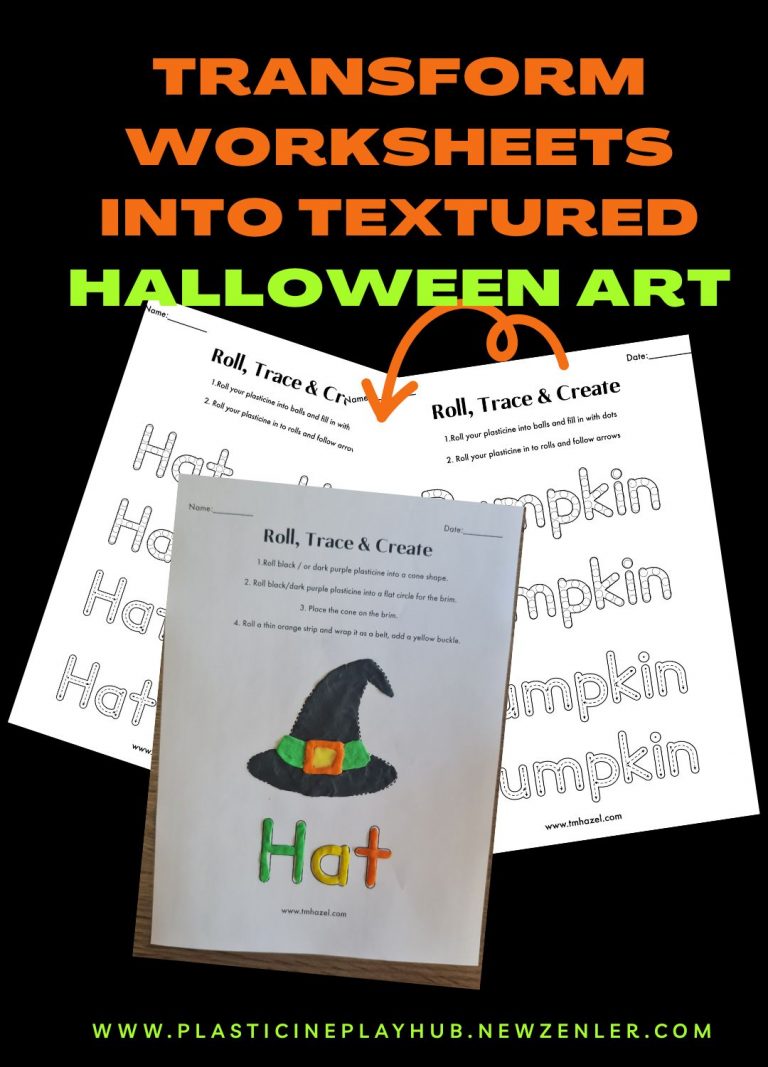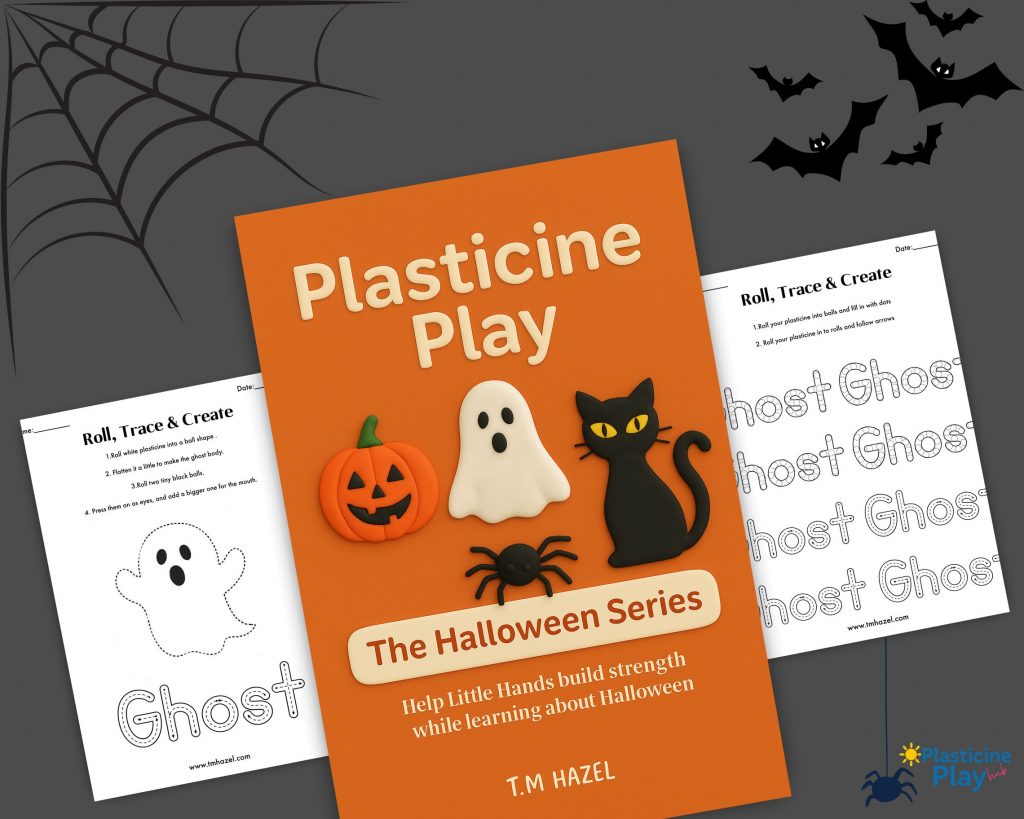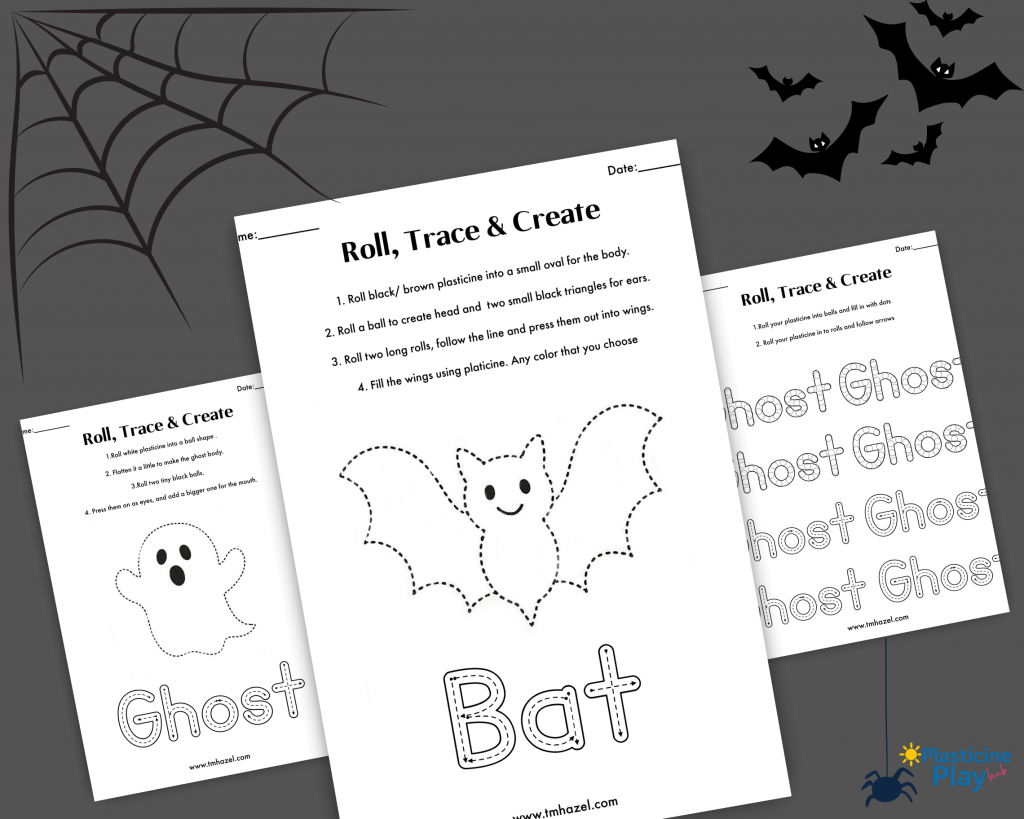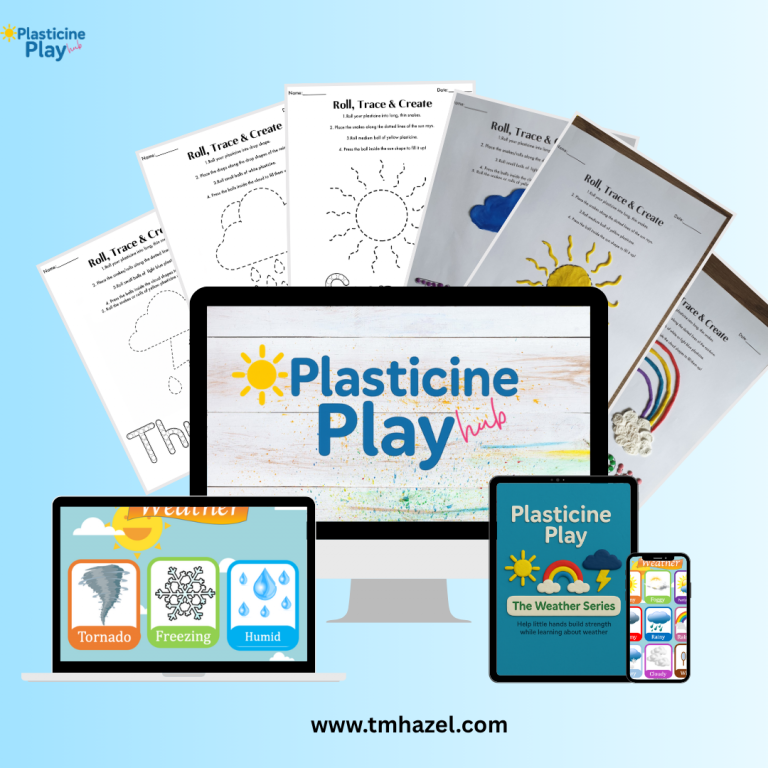Halloween is a magical time for children. The air is crisp, the colors are bright, and imaginations run wild with spooky, fun, and creative ideas. But while Halloween is often associated with candy and costumes, it’s also an incredible opportunity to support early childhood development through art. One of the most effective ways to combine learning and creativity is by transforming traditional worksheets into textured, hands-on Halloween art.
In this post, we’ll explore why turning worksheets into textured art is more than just “messy fun.” We’ll look at the benefits for hand strength, fine motor development, focus, creativity, and early writing skills, along with tips for making Halloween worksheets an engaging and educational experience for children aged 5–7.
Why Traditional Worksheets Aren’t Enough
Many parents are familiar with worksheets: tracing letters, coloring shapes, or matching items. While worksheets serve a purpose, they can often feel passive or repetitive for young children. Some common challenges with traditional worksheets include:
- Children lose interest quickly, especially if the task feels too easy or monotonous.
- Worksheets often don’t fully engage multiple senses, limiting learning to visual and limited motor skills.
- Children with handwriting delays, weak hand control, hyperactivity, or attention challenges may find traditional worksheets frustrating.
This is where textured, hands-on worksheets come in. By integrating materials like plasticine, clay, or textured paints, children not only see the letters or shapes but feel and manipulate them, which has profound benefits for early development.
The Magic of Textured Halloween Art
Transforming worksheets into textured art turns ordinary tasks into multi-sensory experiences. Here’s what makes this approach so effective:
- Strengthening Hand Muscles
When children roll, pinch, or shape plasticine, they naturally engage the small muscles in their hands and fingers. This is crucial for:
- Improving pencil grip and pre-writing readiness
- Developing hand-eye coordination
- Supporting daily tasks like buttoning clothes or tying shoelaces
Halloween-themed activities make this fun. For example, shaping little pumpkins, ghosts, or bats with plasticine adds excitement while building strength and dexterity.
- Boosting Fine Motor Skills
Fine motor skills involve small movements in the hands, wrists, and fingers. Tasks like tracing, coloring, and shaping letters with textured materials:
- Improve precision and control
- Strengthen coordination between hands and eyes
- Help children gain confidence in writing, cutting, and other classroom tasks
Worksheets with textured materials transform these skill-building exercises into Halloween adventures that children love.
- Enhancing Focus and Attention
Hands-on art requires concentration. When children focus on rolling, pressing, or tracing plasticine:
- Their attention span improves, especially for children with hyperactivity or short focus
- They practice patience and persistence, learning that effort creates beautiful results
- The playful, themed activities keep engagement high, which is especially important for early learners
Halloween art worksheets are ideal for short, structured sessions that turn learning into a fun challenge.
- Supporting Cognitive Development
Manipulating textured materials and following multi-step art activities also benefits the brain:
- Strengthens the hand-brain connection, important for writing and problem-solving
- Supports memory, sequencing, and pattern recognition
- Encourages creative thinking as children decide how to color, shape, and arrange their art
By combining worksheets with sensory materials, children are not just learning letters or shapes—they’re developing foundational cognitive skills.
- Encouraging Creativity and Imagination
Halloween worksheets provide a perfect canvas for imaginative play:
- Children can decorate pumpkins, design haunted house, and more
- They learn to experiment with colors, shapes, and textures
- Art becomes a way to express feelings and ideas, supporting social-emotional growth
Creativity is not just “fun”; it builds confidence and problem-solving skills, helping children feel proud of their creations.
How to Transform Worksheets into Textured Halloween Art
Here are some practical tips to take ordinary worksheets and turn them into engaging, educational Halloween activities:
- Choose the Worksheets
These worksheets align with the child’s current developmental level.
- Tracing letters or shapes for pre-writing and fine motor practice
- Coloring activities to encourage hand-eye coordination and color recognition
- Pattern worksheets for sequencing and cognitive skills
- Add Textured Materials
Plasticine can turn worksheets into multi-sensory experiences:
- Use plasticine to trace letters or shapes, giving children a tactile experience
- Roll tiny balls or snakes of plasticine to decorate images like pumpkins, ghosts, or bats
- Layer textures to make the worksheets visually and physically engaging
- Incorporate Short, Fun Routines
Especially for younger children or those with attention challenges, short, structured sessions work best:
- 5–10 minute pre-writing routines with tracing and shaping letters (Download HERE for FREE)
- Quick decoration tasks on Halloween images
- Combine with hands-on prompts like “Roll your pumpkin stem” or “Pinch the ghost’s eyes”
- Encourage Exploration and Independence
Instead of giving step-by-step instructions for every element:
- Let children choose colors and textures
- Allow them to experiment with shapes and arrangement
- Celebrate their creativity and problem-solving, even if it looks different from traditional worksheets
This approach supports confidence, independence, and ownership of learning.
The Benefits for Different Types of Learners
Textured Halloween worksheets are particularly helpful for children who:
- Struggle with focus – The sensory and playful elements capture attention.
- Have weak hand control or fine motor delays – Rolling and shaping materials builds strength.
- Are hyperactive – Hands-on tasks help channel energy into productive, creative work.
- Are bored with traditional worksheets – Seasonal, themed art makes learning exciting.
For parents, this means screen-free, meaningful activities that combine skill-building, creativity, and seasonal fun.
Sensory Learning and Early Writing Skills
One of the most powerful benefits of textured worksheets is the connection between sensory learning and writing skills. Children develop:
- Pencil grip and hand dexterity
- Muscle memory for letter formation
- Control and accuracy for early writing tasks
Tracing shapes or letters in plasticine or clay provides multi-sensory feedback, reinforcing learning in a way that paper and pencil alone cannot.
How Textured Worksheets Encourage Calm and Focus
Halloween worksheets can also be used to promote mindfulness and calm:
- Rolling and shaping plasticine is sensory and soothing
- Children learn patience and attention to detail
- Calm, focused art time encourages positive parent-child interactions
Parents often notice children becoming more confident, patient, and attentive after just a few hands-on sessions.
Seasonal Themes Keep Learning Engaging
Halloween is a fantastic time to use seasonal creativity as a motivator:
- Spooky characters, pumpkins, and witches spark imagination
- Children are naturally drawn to seasonal colors and imagery
- Worksheets feel like a holiday activity, not a chore
By embedding skill-building in fun, festive art, children are motivated to practice fine motor skills, tracing, and focus repeatedly without resistance.
Tips for Parents to Maximize the Learning Benefits
- Create a dedicated art space – Keep materials accessible and organized.
- Encourage discussion – Talk about colors, shapes, and letters as children create.
- Offer gentle guidance – Demonstrate techniques but allow freedom to explore.
- Celebrate achievements – Display completed work or take photos to build confidence.
- Rotate worksheets – Include different themes (pumpkins, ghosts, bats) to keep engagement high.
These strategies help children associate learning with creativity, fun, and success.
Beyond Halloween: Lifelong Skills
While Halloween-themed textured worksheets are seasonal, the skills they build last year-round:
- Fine motor strength – Supports writing, cutting, and daily tasks
- Focus and patience – Transfers to schoolwork and learning activities
- Creativity and confidence – Encourages problem-solving and self-expression
- Cognitive development – Strengthens hand-brain coordination and sequencing
These activities are more than holiday fun—they’re building blocks for school readiness and lifelong learning.
Conclusion: Making Worksheets Come Alive
Transforming worksheets into textured, hands-on Halloween art turns ordinary learning into a joyful, sensory, and creative adventure. Parents can support skill development in a fun, seasonal way while children enjoy engaging, hands-on experiences.
By combining tracing, coloring, and shaping with seasonal themes like pumpkins, ghosts, and bats, worksheets become more than paper exercises—they’re tools for confidence, focus, creativity, and fine motor mastery.
So this Halloween, don’t just hand your child a worksheet. Give them an opportunity to explore, create, and grow—one textured pumpkin, ghost, or bat at a time.



